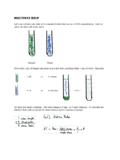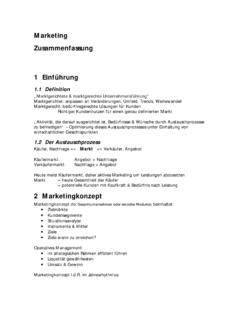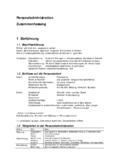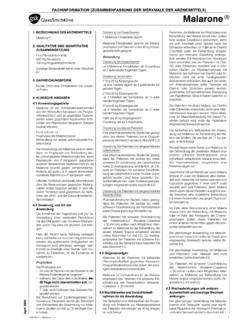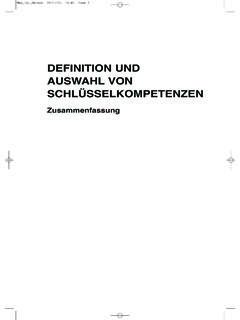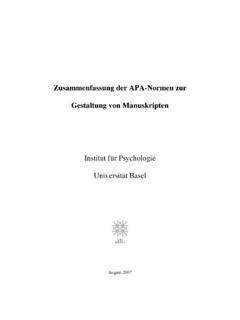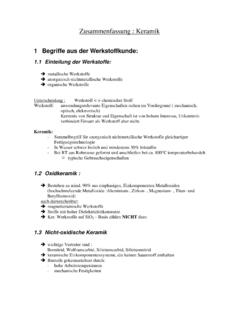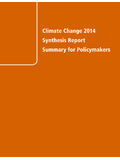Transcription of Contents
1 Contents11 Association Between Introduction .. Measure of Association .. Chapter Summary .. Chi Square Based Measures .. Phi .. Contingency coefficient .. Cramer s V .. Summary of Chi Square Based Measures .. Reduction in Error Measures .. 786766 Chapter 11 Association IntroductionIn previous chapters, much of the discussion concerned a single variable,describing a distribution, calculating summary statistics, obtaining intervalestimates for parameters and testing hypotheses concerning these parame-ters. Statistics that describe or make inferences about a single distributionare referred to asunivariate statistics. While univariate statistics formthe basis for many other types of statistics, none of the issues concerningrelationships among variables can be answered by examining only a singlevariable.
2 In order to examine relationships among variables, it is neces-sary to move to at least the level ofbivariate statistics, examining twovariables. Frequently the researcher wishes to move beyond this tomul-tivariate statistics, where the relationships among several variables aresimultaneously classification tables, used to determine independence and depen-dence for events and for variables, are one type of bivariate statistics. Atest for a difference between two proportions can also be considered a typeof bivariate statistics. The only other example of bivariate methods usedso far in this textbook is the test for the difference between two means, us-ing either the normal or the t distribution. The latter is the only bivariatemethod which has been used to examine variables that have interval or ratiolevel example of a relationship that a researcher might investigate is the767 Measures of Association768relationship between political party supported and opinion concerning so-cioeconomic issues.
3 In Chapters 9 and 10, the relationship between politicalparty supported and opinion concerning various explanations for unemploy-ment, among a sample of Edmonton adults, was examined. This type of re-lationship was examined using a cross classification table and the chi squarestatistic. Differences of proportions, or difference of mean opinion could havebeen used as a method of examining this relationship as well. In this chap-ter, various summary measures are used to describe these relationships. Thechi square statistic from the cross classification table is modified to obtaina measure of association. Correlation coefficients and regression models arealso used to examine the relationship among variables which have ordinal,interval or ratio level and multivariate statistics are useful not only for statisticalreasons, but they form a large part of social science research.
4 The social sci-ences are concerned with explaining social phenomena and this necessarilyinvolves searching for, and testing for, relationships among variables. So-cial phenomena do not just happen, but have causes. In looking for causalfactors, attempting to determine which variables cause or influence othervariables, the researcher examines the nature of relationships among vari-ables. Variables that appear to have little relationship with the variable thatthe researcher is attempting to explaing may be ignored. Variables whichappear to be related to the variable being explained must be closely exam-ined. The researcher is concerned with whether a relationship among vari-ables exists or not. If the relationship appears to exist, then the researcherwishes to know more concerning the nature of this relationship.
5 The sizeand strength of the relationship are of concern, and there are various testsconcerning this chapter, there is no examination of multivariate relationships,where several variables are involved. This chapter looks only at bivariaterelationships, testing for the existence of such relationships, and attemptingto describe the strength and nature of such relationships. The two variablemethods of this chapter can be extended to the examination of multivariaterelationships. But the latter methods are beyond the scope of an introduc-tory textbook, and are left to more advanced courses in Measure of AssociationMeasures of association provide a means of summarizing the size of theassociation between two variables. Most measures of association are scaledMeasures of Association769so that they reach a maximum numerical value of 1 when the two variableshave a perfect relationship with each other.
6 They are also scaled so thatthey have a value of 0 when there is no relationship between two there are exceptions to these rules, most measures of association areof this sort. Some measures of association are constructed to have a range ofonly 0 to 1, other measures have a range from -1 to +1. The latter provide ameans of determining whether the two variables have a positive or negativeassociation with each of significance are also provided for many of the measures of as-sociation. These tests begin by hypothesizing that there is no relationshipbetween the two variables, and that the measure of association equals researcher calculates the observed value of the measure of association,and if the measure is different enough from 0, the test shows that there is asignificant relationship between the two Chapter SummaryThis chapter begins with measures of association based on the chi squarestatistic.
7 It will be seen in Section that the 2statistic is a function notonly of the size of the relationship between the two variables, but also of thesample size and the number of rows and columns in the table. This statisticcan be adjusted in various ways, in order to produce a measure of associ-ation. Following this, in Section , a different approach to obtaining ameasure of association is outlined. This is to consider how much the error ofprediction for a variable can be reduced when the researcher has knowledgeof a second variable. Section??examines various correlation coefficients,measures which summarize the relationship between two variables that havean ordinal or higher level of measurement. Finally, Section??presents theregression model for interval or ratio variables. The regression model allowsthe researcher to estimate the size of the relationship between two variables,where one variable is considered the independent variable, and the othervariable depends on the first Chi Square Based MeasuresOne way to determine whether there is a statistical relationship betweentwo variables is to use the chi square test for independence of Chapter cross classification table is used to obtain the expected number of casesunder the assumption of no relationship between the two variables.
8 ThenMeasures of Association770the value of the chi square statistic provides a test whether or not there is astatistical relationship between the variables in the cross classification the chi square test is a very useful means of testing for a rela-tionship, it suffers from several weakenesses. One difficulty with the test isthat it does not indicate the nature of the relationship. From the chi squarestatistic itself, it is not possible to determine the extent to which one vari-able changes, as values of the other variable change. About the only way todo this is to closely examine the table in order to determine the pattern ofthe relationship between the two second problem with the chi square test for independence is that thesize of the chi square statistic may not provide a reliable guide to the strengthof the statistical relationship between the two variables.
9 When two differentcross classification tables have the same sample size, the two variables inthe table with the larger chi square value are more strongly related than arethe two variables in the table with the smaller chi square value. But whenthe sample sizes for two tables differ, the size of the chi square statistic is amisleading indicator of the extent of the relationship between two will be seen in Example further difficulty is that the value of the chi square statistic may changedepending on the number of cells in the table. For example, a table with 2columns and 3 rows may give a different chi square value than does a crossclassification table with 4 columns and 5 rows, even when the relationshipbetween the two variables and the sample sizes are the same. The numberof rows and columns in a table are referred to as thedimensionsof thetable.
10 Tables of different dimension give different degrees of freedom, partlycorrecting for this problem. But it may still be misleading to compare thechi square statistic for two tables of quite different order to solve some of these problems, the chi square statistic can beadjusted to take account of differences in sample size and dimension of thetable. Some of the measures which can be calculated are phi, the contingencycoefficient, and Cramer s V. Before examining these measures, the followingexample shows how sample size affects the value of the chi square Effect of Sample Size on the Chi Square StatisticThe hypothetical examples of Section of Chapter 6 will be used toillustrate the effect of sample size on the value of the chi square data from Tables and will first be used to illustrate how a largerMeasures of Association771chi square value can be used to indicate a stronger relationship between twovariables when two tables have the same sample size.


